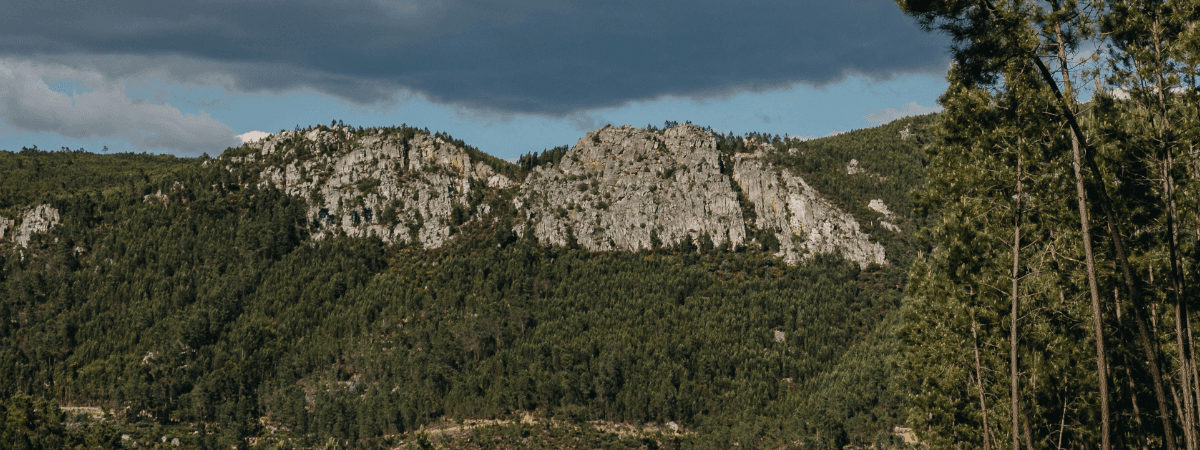This is the smallest group of Schist Villages, as well as the most spread out. The proximity to the Alentejo plain can be utterly felt in the landscape.
Água Formosa
Água Formosa (Fair Water) received its name because of the pure liquid which streams out of its fountain and is as relaxing as the fade sound of the water flow. That is why it has been attracting so many people who are running away from the stress in the city find their haven here. Thanks to the recovery works in the village, clearly visible on the pedestrian bridge over the Galega Stream, the number of residents has been increasing. Orchards grow and stone houses come to life with everyday life sounds. It is worth your while to take a visit and feel the warmth of the neighbours and a certain feeling of hope in the air in this sunny slope ten kilometres away from the Portuguese Geodesic Centre. Try a stroll through the Schist Paths of Água Formosa which use the old paths tracked by millers and farmers near the Galega and Valada streams, with a majestic view made of woods and rocky outcrops which make you forget all worries.
Figueira
A tangle of narrow streets flanked by traditional schist houses leads to the community oven where bread is backed. The older generations used to meet in this place, as well as in the fountain where everyone collected their water. Nowadays, Figueira is still ruled by the rhythm of rural life. The windmill and the threshing floor, the cattle slowly passing by, the orchards and the hay transport in carriages make the village a timeless place where people relate to each other as if they were all a small family. In the exit there is a path which leads to a Philippine bridge and an olive oil press. Close-by and contrasting with this rurality, you will find Fróia river beach and the Moitas Parachuting Centre, two places equally capable of providing well-spent days.
Martim Branco
Martim Branco is like the sweet smell of freshly baked bread in a wood-fired oven: familiar, traditional and absolutely irresistible. Community ovens are, in any case, the most interesting elements in this village and are used to bake bread, but also cakes and roast kid. Recently recovered, these ovens are, along with the fountains, meeting places for the people in the village and have been gaining a new life. Taste the delicacies that come out of them and don’t miss the chance to enjoy the beauty of the riverfront, the most distinguished element in the village along with the schist houses. Before you leave, you should also visit the Arts and Crafts House, an old house which has been transformed in order to reactivate the windmills at Almaceda stream and the linen and loom culture. A Schist Villages Store has also been established in this house.
Sarzedas
An old town and seat of the municipality, Sarzedas still has a certain majestic feeling in its plastered houses with colour traces and large volumes, a square where a pelourinho rises, churches and even in its chapels. The village earned a new life when some of the community spaces like the wash-house and the Town’s Fountain were recovered and access routes were paved. Now, it’s just not the locals but also tourists who climb to the top of São Jacinto to appreciate the picturesque design of the streets and houses, the matriz church and its bell towers with three bells.
Close by, you will find the ruins of the old medieval castle, built around the same time as the village was first populated during the reign of King Sancho I and which remind us how old this magical place really is.

